Impressive Kaymakli Underground City – An Ancient Hiding Place
AncientPages.com - Located in the in the Nevsehir province, Turkey, the impressive Kaymakli underground city consists of elaborate labyrinth of tunnels, caves and low, narrow passages. There are 36 underground cities in Cappadocia and the widest one is the Kaymakli underground city, while the highly sophisticated underground city of Derinkuyu is the deepest one.
Kaymakli underground city is one of the most famous of the Cappadocia underground cities. The city’s ancient name was Enegup. The underground city’ history dates back Hittites and Phrygians Period, in B.C 3000.
Today from past it has been used various purposes in different times. Due to its soft volcanic rock, Kaymakli people built this splendid underground city around their homes for the security reasons. Also there are found special, secret tunnels connected to underground city and those houses. Whenever there was happened any attacks, they could temporarily use these private tunnels to pass the underground masterpiece in order to protect themselves.
During the Byzantine era and the Arab-Byzantine wars (780-1180), Christians used the underground city to protect them from Muslim Arabs persecution.
The city was connected with Derinkuyu underground city through miles of tunnels and served as good hiding place.
After the region fell to the Ottomans the cities were used as refuges from the Turkish Muslim rulers, and as late as the 20th century the inhabitants, called Cappadocian Greeks, were still using the underground cities to escape periodic waves of Ottoman persecution.
Dawkins, a Cambridge linguist who conducted research on the Cappodocian Greeks in the area from 1909-1911, recorded that in 1909 that “when the news came of the recent massacres at Adana, a great part of the population at Axo took refuge in these underground chambers, and for some nights did not venture to sleep above ground.”
See also:
Highly Sophisticated Underground City Of Derinkuyu – Who Were The Master Builders?
Ancient Superhighways: 12,000-Year-Old Massive Underground Tunnels From Scotland To Turkey
Like most of the word’s underground cities, the most impressive aspect of the Kaymakli Underground City is the organized, structured and comprehensive nature of the complex. It had everything from living space, stables and communal kitchens to a church and a graveyard as well as being well fortified to protect its inhabitants. It also has an inordinate number of storage rooms.
The underground city of Kaymakli had eight floors and was about 40 meters deep. Four of these floors are open to tourists. On the first floor there is a stable and on the second is a church.
The third floor contains the most important areas of the underground compound: storage places, wine or oil presses, and kitchens. In order to avoid detection by the enemy, smoke from the kitchen was emitted via several little chimneys rather than a single large one. On the fourth floor, there are huge food storages. It has narrow tunnels to weaken the enemy. It composes of private kitchen and flour furnaces. This reflects us underground city public has a regularly economy living.
The air inside the city remains perfectly fresh no matter how many visitors there are, due to air shafts.
Copyright © AncientPages.com All rights reserved. This material may not be published, broadcast, rewritten or redistributed in whole or part without the express written permission of AncientPages.com
Expand for referencesMore From Ancient Pages
-
 Empusa – Shape-Shifting Evil Female Demon In Greek Myth And Folklore
Featured Stories | Jun 3, 2020
Empusa – Shape-Shifting Evil Female Demon In Greek Myth And Folklore
Featured Stories | Jun 3, 2020 -
 Excavation Of A Mysterious 5,000-Year-Old Tomb Linked To King Arthur Has Started
Archaeology | Jul 5, 2022
Excavation Of A Mysterious 5,000-Year-Old Tomb Linked To King Arthur Has Started
Archaeology | Jul 5, 2022 -
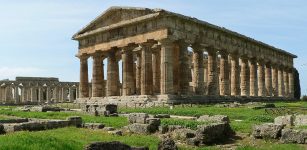 Excavations Reveal Massive Building And Invaluable Ceramics In Ancient City Of Poseidonia
Archaeology | Apr 10, 2017
Excavations Reveal Massive Building And Invaluable Ceramics In Ancient City Of Poseidonia
Archaeology | Apr 10, 2017 -
 Legendary Lost Island Of Gold Of The Mysteriously Vanished Srivijaya Civilization Found Underwater
Archaeology | Oct 25, 2021
Legendary Lost Island Of Gold Of The Mysteriously Vanished Srivijaya Civilization Found Underwater
Archaeology | Oct 25, 2021 -
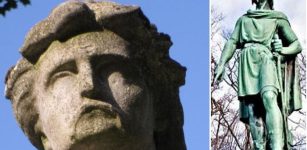 Rollo: Viking Sea Lord, Chieftain, Lone Wolf And The First Ruler Of Normandy
Featured Stories | Dec 6, 2023
Rollo: Viking Sea Lord, Chieftain, Lone Wolf And The First Ruler Of Normandy
Featured Stories | Dec 6, 2023 -
 Young Boy Finds A Huge Tooth From A Prehistoric Shark In South Carolina
Archaeology | Sep 3, 2022
Young Boy Finds A Huge Tooth From A Prehistoric Shark In South Carolina
Archaeology | Sep 3, 2022 -
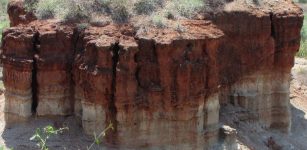 Spectacular Olduvai Gorge And Early Hominid Fossils Found In East Africa
Archaeology | Nov 26, 2016
Spectacular Olduvai Gorge And Early Hominid Fossils Found In East Africa
Archaeology | Nov 26, 2016 -
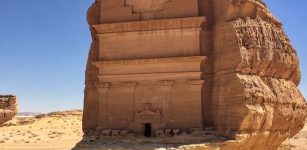 Mada’in Saleh: Magnificent Timeless Rock-Cut Tombs And Monuments In The Desert
Civilizations | Oct 30, 2018
Mada’in Saleh: Magnificent Timeless Rock-Cut Tombs And Monuments In The Desert
Civilizations | Oct 30, 2018 -
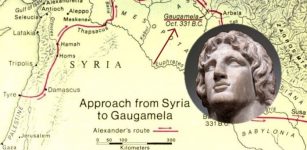 Why Is The Battle Of Gaugamela Called Broken ‘Camel’s Back’?
Ancient History Facts | Jul 1, 2020
Why Is The Battle Of Gaugamela Called Broken ‘Camel’s Back’?
Ancient History Facts | Jul 1, 2020 -
 Controversial Unexplained Ancient Mystery In Mongolia – Discovery Of Remarkable Secrets Hidden In Artificial Cave – Part 1
Featured Stories | May 1, 2018
Controversial Unexplained Ancient Mystery In Mongolia – Discovery Of Remarkable Secrets Hidden In Artificial Cave – Part 1
Featured Stories | May 1, 2018 -
 Seppuku: Ancient Suicide Ritual That Guaranteed Honorable Death Instead For Life In Shame
Ancient Traditions And Customs | Mar 8, 2018
Seppuku: Ancient Suicide Ritual That Guaranteed Honorable Death Instead For Life In Shame
Ancient Traditions And Customs | Mar 8, 2018 -
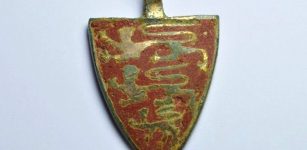 Priceless 800-Year-Old Treasure Featuring Three Golden Lions Unearthed
Archaeology | Aug 5, 2022
Priceless 800-Year-Old Treasure Featuring Three Golden Lions Unearthed
Archaeology | Aug 5, 2022 -
 Sinister Manchac Swamp And The Chilling Curse Of Julia Brown
Featured Stories | Aug 25, 2021
Sinister Manchac Swamp And The Chilling Curse Of Julia Brown
Featured Stories | Aug 25, 2021 -
 Significance Of Secret And Powerful Number 108 That Has Accompanied Humankind For Thousands Of Years
Ancient Symbols | Jun 19, 2017
Significance Of Secret And Powerful Number 108 That Has Accompanied Humankind For Thousands Of Years
Ancient Symbols | Jun 19, 2017 -
 Mysterious Lost Kingdom Of Urartu And Its Enigmatic History
Featured Stories | Jun 22, 2014
Mysterious Lost Kingdom Of Urartu And Its Enigmatic History
Featured Stories | Jun 22, 2014 -
 Dinosaurs Were On The Up Before Asteroid Downfall – Study Finds
Archaeology | Dec 8, 2022
Dinosaurs Were On The Up Before Asteroid Downfall – Study Finds
Archaeology | Dec 8, 2022 -
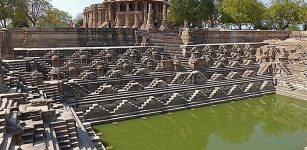 Ancient Stepwells Of India: Symbol Of Sacred Water And Boundary Between Heaven And Earth
Civilizations | Jan 11, 2019
Ancient Stepwells Of India: Symbol Of Sacred Water And Boundary Between Heaven And Earth
Civilizations | Jan 11, 2019 -
 On This Day In History: Treaty Of Seville Signed – On Nov 9, 1729
News | Nov 9, 2016
On This Day In History: Treaty Of Seville Signed – On Nov 9, 1729
News | Nov 9, 2016 -
 Menes – Legendary First Monarch Probably Under Different Names Who Unified Egypt
Featured Stories | Nov 7, 2016
Menes – Legendary First Monarch Probably Under Different Names Who Unified Egypt
Featured Stories | Nov 7, 2016 -
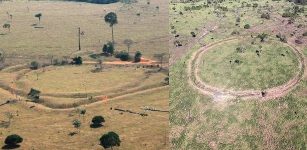 Discovery Of Fortified Villages And Earthworks Re-Writes Ancient History Of Amazon
Archaeology | Mar 29, 2018
Discovery Of Fortified Villages And Earthworks Re-Writes Ancient History Of Amazon
Archaeology | Mar 29, 2018



